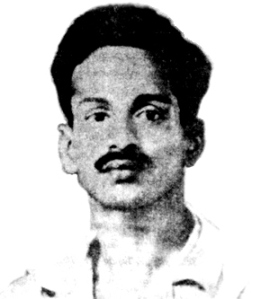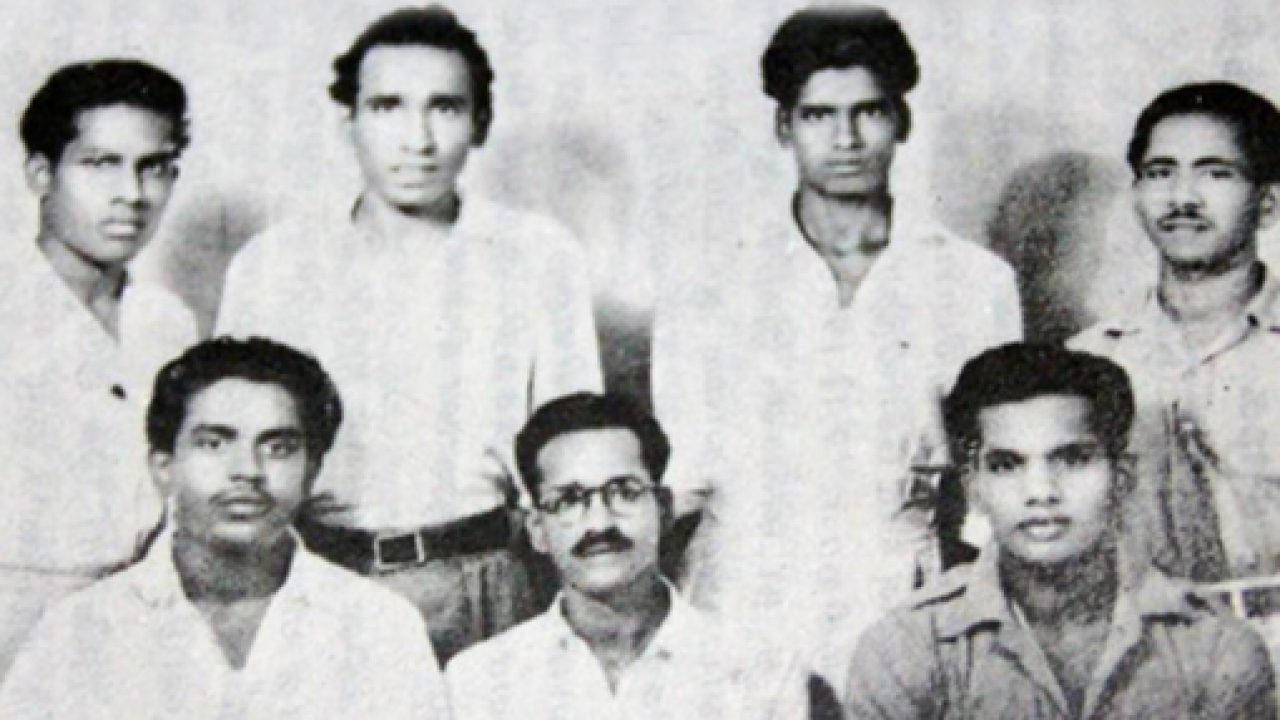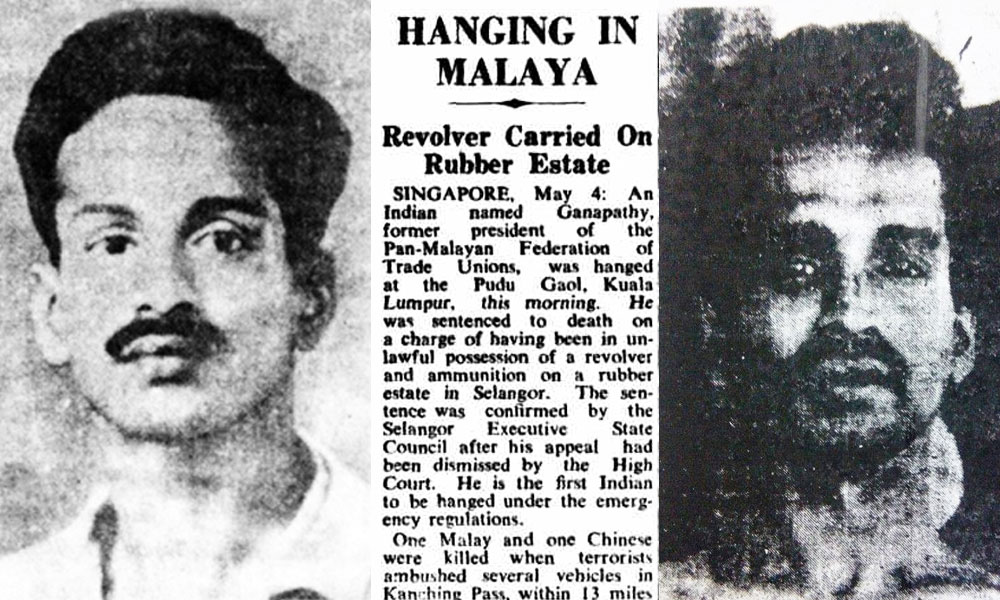Hung By The British: The Activist Who Fought To Improve The Lives Of Labourers In Malaya
He was hung only two months of his incarceration for allegedly being in possession of an unlicensed firearm.
We have read stories of numerous freedom fighters who fought tirelessly for our country's independence in our history books.
But some of them fall through the cracks and fail to be recognised for their contribution, and S. A. Ganapathy is one of them.
Many pre-independence citizens would remember his role in the communist underground rebellion during the Japanese occupation of Malaya.
He was a fighter of the workers' movement, dedicating his life to improving the lives of the working class.
Ganapathy also fought for full independence of Malaya from the British colonialists.
According to Telegram No. 510 from High Commissioner of Malaya to the Secretary of State of Colonies dated 2 May 1949, Ganapathy was born in 1917 in Tamil Nadu, India. He migrated to Malaya in 1929.
In 1939, Ganapathy joined the Malayan Communist Party (CPM) and served in the Indian National Army (INA) as an instructor during the Japanese occupation from 1943 to 1945.
In 1945, he was appointed as a secretary for CPM, working specifically in organising the Indian section of the General Labour Union (GLU). Because of his active work in the union, he was reported to be a member of the Central Executive Committee of CPM.
In February 1947, he was elected President of the Pan Malayan Federation of Trade Unions (PMFTU) after successfully seeking to increase the GLU's influence
The PMFTU was the first union party in Malaya and it was established to merge all trade unions under one roof.
The Singapore Free Press reported that under Ganapathy's leadership, the union had 22 resolutions and one of them was demand for basic salary.
According to Varnam, Ganapathy stressed the significance of a democratic system in order to improve workers' standards of living.
He made political philosophy relatable to the masses, who were largely illiterate, by relating it to basic human needs. Ganapathy also advocated to the working class the importance of education.
Under Ganapathy's leadership, the PMFTU, had formed a joint coalition with Pusat Tenaga Rakyat (PUTERA) and All Malayan Council of Joint Action (AMCJA). Together they fought for a democratic constitution in Malaya, to ensure the common people's welfare was protected.
According to Sosialis, Ganapathy also represented Malaya in the Asia Relationship Conference in Delhi from 25 March to 2 April 1947, which was attended by other prominent Malayan figures such as Abdullah CD from CPM and Dr. Burhannuddin al-Helmy from Malay Nationalist Party (PKMM).
Apart from that, Ganapathy led the Singapore Federations of Trade Unions (STFU) in organising a massive May Day parade of 50,000 members in 1947, as per this blog post.
The Singapore government was definitely threatened by the numbers because the following year, when STFU pledged that 100,000 labourers will take part in the May Day parade, they banned all processions and rallies.
The rally could have been the largest May Day parade in Malaya's history if it was approved.
In response to the growing opposition from these unions, the British colonialists declared a State of Emergency in June 1948, and banned all anti-colonial trade union activities
Many political activists and union members were detained during the Emergency which forced Ganapathy to go into hiding.
However, this blog post quotes The Malay Mail, states that Ganapathy was found a year later on 1 March 1949, by special constables serving for the British at a rubber estate in Rawang, Selangor.
Ganapathy allegedly put up a fight and took out an unlicensed, loaded revolver when he was asked to surrender.
This eventually led to his arrest and he was tried on 15 March 1949 for unlawful possession of a revolver and carrying six rounds of ammunition. Ganapathy was also sentenced to death by hanging on the very same day.
And on 23 April 1949, the Selangor State Executive case confirmed Ganapathy's sentence after his further appeal was dismissed in Supreme Court.
Only two months after his incarceration, Ganapathy was hanged on 4 May 1949. The manner in which the British colonialists hastened the court process showed that they were so afraid of Ganapathy's influence.
His death by hanging was proclaimed as "murder" by the International Federation of Labour Unions (WFTU), as quoted by Varnam.
Sadly, following Ganapathy's death, many of his comrades were incarcerated or executed, and PMFTU was inevitably dissolved.



